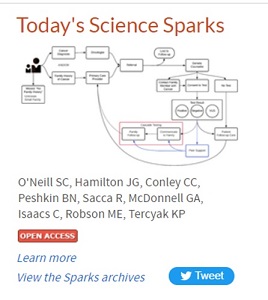International Open Access Week is a good time to revisit preprints and their growing role in the biomedical scholarly communication landscape. Although embraced by researchers in fields like physics for decades, it has only been in the last few years that researchers – and funding agencies – in the biomedical sciences have begun to become more serious about using preprint servers.
How are preprint servers the same or different than open access (OA) journals?
The most important difference is that manuscripts posted to a preprint server have not been confirmed by peer-review, whereas OA journal articles published in reputable scholarly journals will have gone through a rigorous peer-review process before being published. As such, taking extra precautions before citing research that appears only in a preprint version may be merited – for example, checking that it has not been listed in the Retraction Watch database.
That said, most publishers allow manuscripts that have been previously posted as preprints to also be submitted to their journals for eventual publication as a peer-reviewed article. There is even a Preprint/Journal Manuscript matcher tool now available that can help authors who have posted to either bioRxiv or medRxiv preprint servers to use a text-matching automation tool to identify good journal contenders for their preprint server-posted manuscript.
Although both OA journal articles and preprints are freely-available to readers to view and download, posting to a preprint server is free for the authors, whereas most OA journals charge an Article Processing Charge (ACP) or publication fee. Researchers can search the Directory of Open Access Journals (DOAJ) for OA journal ACP information.
Both document formats are now also accepted as works that can be cited in NIH awards reporting. The NIH has in fact expanded their working definition of publication to better accommodate “Interim Research Products” like preprints. As per NIH guidance:
Publication: A “Publication” includes (a) published research results in any manuscript that is peer-reviewed and accepted by a journal1 or (b) a complete and public draft of a scientific document (commonly referred to as preprint).2
It is also important to note that most preprint servers will assign a DOI (digital object identifier) to the preprint manuscript that will be different than the DOI that may eventually be assigned to the final published article. As such, the two versions can and should be treated as separate “citable” items that can both be included in a researcher’s author profile(s) and CV.
Select preprints have also begun to be indexed in PMC and PubMed, initially as part of a pilot project for COVID-19 research, but “NLM will expand the pilot to include preprints resulting from the broader spectrum of NIH-supported research as curation and ingest workflows are refined, automated, and made scalable”.
Last – ORCiD has also added features and functionality to accommodate preprint citation information in their author profiles. A preprint work type category has been added, as well as the ability for preprint servers that are ORCiD members to transfer citation information into author profiles. Furthermore, linkages within ORCiD can be created once the published article citation information related to that preprint becomes available.
To learn more about preprints, be sure to check out NLM’s new self-paced tutorial on Preprints or Ask Us at the MSK Library!



